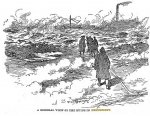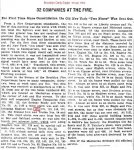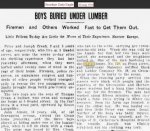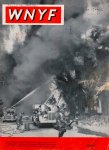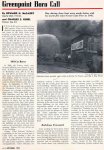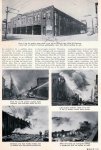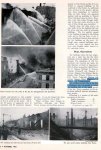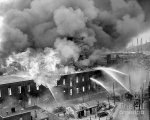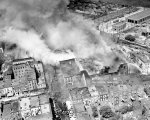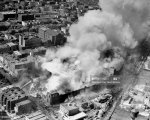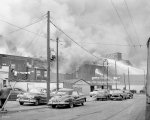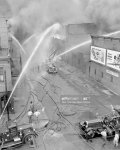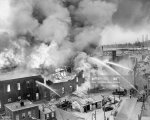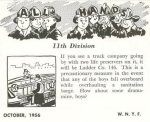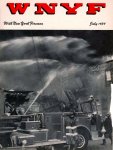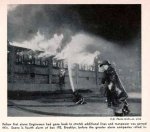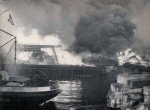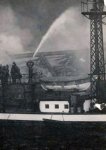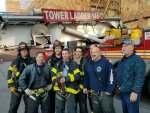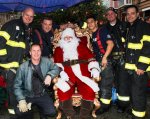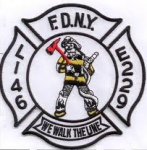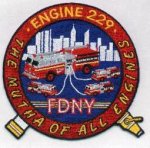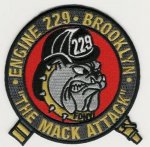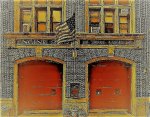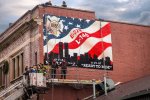You are using an out of date browser. It may not display this or other websites correctly.
You should upgrade or use an alternative browser.
You should upgrade or use an alternative browser.
FDNY and NYC Firehouses and Fire Companies - 2nd Section
- Thread starter mack
- Start date
ENGINE 229/LADDER 146 (CONTINUED)
FIRES/EVENTS
1919 STANDARD OIL COMPANY FIRE
historicgreenpoint This blog explains the history of North Brooklyn
The Most Terrifying Fire in Greenpoint History
BY geoffreyowencobb
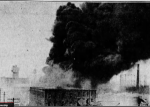

September 13, 1919 was one of the most terrifying days for the residents of Greenpoint. On that September day a huge fire threatened to engulf the entire neighborhood in flames. The fire at the Sone and Fleming oil Works on Kingsland Avenue was one of the largest and most dangerous fires in Brooklyn history. It led to millions of dollars in damage and the evacuation of hundreds of residents. Many Greenpointers feared being burned to death.
Fires were common at the works, but the fire was not supposed to happen. The firm was well aware of the capacity for such a fire and they had installed a special pump that doused oil fires by creating steam. However, the explosion that started the fire was so strong that the pump system failed and the yard with a hundred huge oil and Naptha tanks lay defenseless.
The fire started at one-forty in the afternoon when tank #36 with fifty-five thousand gallons of gasoline exploded. Five minutes later the flames had spread to three other tanks. A fire alarm was sounded as were a second, third and fourth, but the fire was so huge and dangerous that a borough wide alarm went out. Soon four hundred seventy-five fire fighters were battling the flames along with nine fireboats. However, because the fire had so much flammable liquid it posed especial danger. The fire soon engulfed the company’s four-story office building on the site.The heat from the flames was intense and the fire was so loud that fire fighters had to use hand signals to communicate.
Soon the flames were so dangerous that civilians had to be evacuated. Seven hundred girls who worked for a local dye factory were sent out of their place of employment to safety. Hundreds of tenement dwellers in the area around Kingsland and Norman Avenue also had to be evacuated. Many of them were Italian and Polish and their limited ability to communicate in English only added to their fear. In the rush to escape the flames children were trampled and one young Polish boy was seriously injured when he was trampled.
By about four-thirty the situation looked hopeless. There were a hundred tanks on the site and they all seemed in danger of blowing up. Soon the fire had jumped the creek. It burned a candle factory in Long Island City and soon the flames engulfed the Standard Oil works in Long Island CIty. The flames ignited the bridge that connected Long Island CIty and Greenpoint. All availabe fire fighters in the city eventually had to be called and all the available equipment that could be sent to Greenpoint was dispatched there. The fire was so huge that it could be seen twenty miles away on Long Island
The firemen were most afraid that the flames would ignite two tanks of highly flammable naphtha. FIremen worked feverishly to keep the tanks from catching fire. Then suddenly, the wind veered and headed directly for the naphtha tanks. Someone yelled,” Oh my God there go the naphtha tanks.” The firemen fearing being burned alive and ran as fast as they could.
By ten O’Clock thousands of people crowded the streets. There was terror amongst many Greenpoint and Williamsburg residents. The flames were so intense that the area was lit up as if it had been day. Eventually the fire burned itself out, but many fire fighters were burned and a huge swath of industrial Greenpoint and Long Island City was a a smoking ruin.
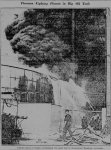


FIRES/EVENTS
1919 STANDARD OIL COMPANY FIRE
historicgreenpoint This blog explains the history of North Brooklyn
The Most Terrifying Fire in Greenpoint History
BY geoffreyowencobb


September 13, 1919 was one of the most terrifying days for the residents of Greenpoint. On that September day a huge fire threatened to engulf the entire neighborhood in flames. The fire at the Sone and Fleming oil Works on Kingsland Avenue was one of the largest and most dangerous fires in Brooklyn history. It led to millions of dollars in damage and the evacuation of hundreds of residents. Many Greenpointers feared being burned to death.
Fires were common at the works, but the fire was not supposed to happen. The firm was well aware of the capacity for such a fire and they had installed a special pump that doused oil fires by creating steam. However, the explosion that started the fire was so strong that the pump system failed and the yard with a hundred huge oil and Naptha tanks lay defenseless.
The fire started at one-forty in the afternoon when tank #36 with fifty-five thousand gallons of gasoline exploded. Five minutes later the flames had spread to three other tanks. A fire alarm was sounded as were a second, third and fourth, but the fire was so huge and dangerous that a borough wide alarm went out. Soon four hundred seventy-five fire fighters were battling the flames along with nine fireboats. However, because the fire had so much flammable liquid it posed especial danger. The fire soon engulfed the company’s four-story office building on the site.The heat from the flames was intense and the fire was so loud that fire fighters had to use hand signals to communicate.
Soon the flames were so dangerous that civilians had to be evacuated. Seven hundred girls who worked for a local dye factory were sent out of their place of employment to safety. Hundreds of tenement dwellers in the area around Kingsland and Norman Avenue also had to be evacuated. Many of them were Italian and Polish and their limited ability to communicate in English only added to their fear. In the rush to escape the flames children were trampled and one young Polish boy was seriously injured when he was trampled.
By about four-thirty the situation looked hopeless. There were a hundred tanks on the site and they all seemed in danger of blowing up. Soon the fire had jumped the creek. It burned a candle factory in Long Island City and soon the flames engulfed the Standard Oil works in Long Island CIty. The flames ignited the bridge that connected Long Island CIty and Greenpoint. All availabe fire fighters in the city eventually had to be called and all the available equipment that could be sent to Greenpoint was dispatched there. The fire was so huge that it could be seen twenty miles away on Long Island
The firemen were most afraid that the flames would ignite two tanks of highly flammable naphtha. FIremen worked feverishly to keep the tanks from catching fire. Then suddenly, the wind veered and headed directly for the naphtha tanks. Someone yelled,” Oh my God there go the naphtha tanks.” The firemen fearing being burned alive and ran as fast as they could.
By ten O’Clock thousands of people crowded the streets. There was terror amongst many Greenpoint and Williamsburg residents. The flames were so intense that the area was lit up as if it had been day. Eventually the fire burned itself out, but many fire fighters were burned and a huge swath of industrial Greenpoint and Long Island City was a a smoking ruin.



ENGINE 229/LADDER 146 (CONTINUED)
FIRES/EVENTS
1931 FIRE

27 VAN DAM STREET FIRE BUILDING
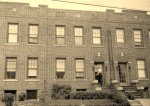
1932 HOUSEWATCH JOURNAL

Official journal dated January 15, 1932 through March 21, 1932. It contains all the information relating to the operations of FDNY Engine 229 and Hook & Ladder 146 located in Brooklyn, NY. The entries are hand written in ink and very legible. It contains such information as the types of trucks at the station and the entire roster for the companies. The log also contains descriptions of all the fire alarms received (mostly by telegraph alarm) and the general activities of the firefighters.
MEMBERS

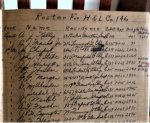
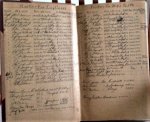
1936 FIRE

717 GRAND STREET FIRE BUILDING

FIRES/EVENTS
1931 FIRE

27 VAN DAM STREET FIRE BUILDING

1932 HOUSEWATCH JOURNAL

Official journal dated January 15, 1932 through March 21, 1932. It contains all the information relating to the operations of FDNY Engine 229 and Hook & Ladder 146 located in Brooklyn, NY. The entries are hand written in ink and very legible. It contains such information as the types of trucks at the station and the entire roster for the companies. The log also contains descriptions of all the fire alarms received (mostly by telegraph alarm) and the general activities of the firefighters.
MEMBERS



1936 FIRE
717 GRAND STREET FIRE BUILDING

Last edited:
ENGINE 229/LADDER 146 (CONTINUED)
FIRES/EVENTS
2006 WATERFRONT FIRE

Blaze on Brooklyn Waterfront Levels Historic Warehouses


The Greenpoint fire left the streets flooded and eerie. Officials said that 350 firefighters were called to the scene, the largest response other than 9/11 since Aug. 26, 1995, when the St. George Hotel burned in Brooklyn.
By Michael Wilson May 3, 2006
A fire roared through a network of abandoned, historic warehouses on the Brooklyn waterfront yesterday with a speed and ferocity that challenged and exhausted hundreds of firefighters, and led fire marshals to suspect arson.
The blaze burned all day as it consumed a former rope factory on West Street near the site of the Continental Iron Works in Greenpoint, which launched the ironclad warship Monitor for the Union 144 years ago. The fire blackened the sky above northern Brooklyn with thick smoke shot through at its base with bright flames a block deep. The plume could be seen for miles.
"It was like a flamethrower," said John Czaplinski, who lives nearby on Noble Street. "The fire was leaping from one building to another."
More than 350 firefighters from at least 70 units spent all day at the fire, those in front retreating to safety when entire walls crumbled and launched smoldering red bricks 100 feet down the narrow streets of the waterfront. At 10 alarms, it was called the city's largest fire in more than a decade, excepting the terrorist attacks of Sept. 11, 2001.
The speed of the blaze and the fact that it started just before dawn in abandoned buildings led investigators to suspect arson, said Fire Commissioner Nicholas Scoppetta. The buildings were owned by Joshua Guttman, of Lawrence, N.Y., a real estate developer with a history of buying commercial properties and turning them into condominiums.
A lawyer for Mr. Guttman, Joseph Kosofsky, said the developer had no idea how the fire began. "It's the last thing in the world we need right now," he said. "He's a very substantial guy. If someone set fire to it, it could have been squatters, it could have been anybody. How in the hell can you watch 21 acres of industrial property?"
The fire area is a belt of formerly industrial, historic waterfront properties that are turning, one block at a time, into condominiums and apartments, bringing the young and affluent to the neighborhood. Mr. Guttman had acquired demolition permits for 4 of his 10 sites in the area and filed preliminary requests for 6 more on Monday, said Jennifer Givner, a spokeswoman for the city's Department of Buildings.
The change in the neighborhood's population could be seen in the faces on the sidewalks staring up at the flames: old Polish women, young couples with their digital cameras, knots of Hasidic men. Everywhere there were firefighters, climbing into or out of their gear, and police officers. Blocks surrounding the fire were closed to cars and pedestrians. The fire stalled traffic on the Williamsburg Bridge and the Franklin D. Roosevelt Drive in Manhattan as drivers slowed for a look.
"This is a huge fire," Mr. Scoppetta told reporters two blocks from the blaze, squinting as a shifting breeze brought ash and smoke down on the street. Although the buildings were considered vacant, neighbors said young people and the homeless sometimes stayed in the labyrinth of deserted rooms.

 www.nytimes.com
www.nytimes.com
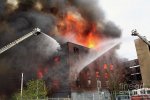
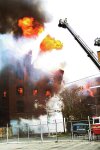
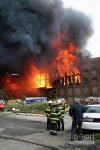
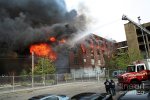
FIRES/EVENTS
2006 WATERFRONT FIRE
Blaze on Brooklyn Waterfront Levels Historic Warehouses


The Greenpoint fire left the streets flooded and eerie. Officials said that 350 firefighters were called to the scene, the largest response other than 9/11 since Aug. 26, 1995, when the St. George Hotel burned in Brooklyn.
By Michael Wilson May 3, 2006
A fire roared through a network of abandoned, historic warehouses on the Brooklyn waterfront yesterday with a speed and ferocity that challenged and exhausted hundreds of firefighters, and led fire marshals to suspect arson.
The blaze burned all day as it consumed a former rope factory on West Street near the site of the Continental Iron Works in Greenpoint, which launched the ironclad warship Monitor for the Union 144 years ago. The fire blackened the sky above northern Brooklyn with thick smoke shot through at its base with bright flames a block deep. The plume could be seen for miles.
"It was like a flamethrower," said John Czaplinski, who lives nearby on Noble Street. "The fire was leaping from one building to another."
More than 350 firefighters from at least 70 units spent all day at the fire, those in front retreating to safety when entire walls crumbled and launched smoldering red bricks 100 feet down the narrow streets of the waterfront. At 10 alarms, it was called the city's largest fire in more than a decade, excepting the terrorist attacks of Sept. 11, 2001.
The speed of the blaze and the fact that it started just before dawn in abandoned buildings led investigators to suspect arson, said Fire Commissioner Nicholas Scoppetta. The buildings were owned by Joshua Guttman, of Lawrence, N.Y., a real estate developer with a history of buying commercial properties and turning them into condominiums.
A lawyer for Mr. Guttman, Joseph Kosofsky, said the developer had no idea how the fire began. "It's the last thing in the world we need right now," he said. "He's a very substantial guy. If someone set fire to it, it could have been squatters, it could have been anybody. How in the hell can you watch 21 acres of industrial property?"
The fire area is a belt of formerly industrial, historic waterfront properties that are turning, one block at a time, into condominiums and apartments, bringing the young and affluent to the neighborhood. Mr. Guttman had acquired demolition permits for 4 of his 10 sites in the area and filed preliminary requests for 6 more on Monday, said Jennifer Givner, a spokeswoman for the city's Department of Buildings.
The change in the neighborhood's population could be seen in the faces on the sidewalks staring up at the flames: old Polish women, young couples with their digital cameras, knots of Hasidic men. Everywhere there were firefighters, climbing into or out of their gear, and police officers. Blocks surrounding the fire were closed to cars and pedestrians. The fire stalled traffic on the Williamsburg Bridge and the Franklin D. Roosevelt Drive in Manhattan as drivers slowed for a look.
"This is a huge fire," Mr. Scoppetta told reporters two blocks from the blaze, squinting as a shifting breeze brought ash and smoke down on the street. Although the buildings were considered vacant, neighbors said young people and the homeless sometimes stayed in the labyrinth of deserted rooms.

Blaze on Brooklyn Waterfront Levels Historic Warehouses
More than 350 firefighters battled the fire all day as it consumed a former rope factory on West Street in Greenpoint.




ENGINE 229/LADDER 146 (CONTINUED)
2015 FIREHOUSE STABILIZATION

6 15 15 Soil Stabilization under 100-Year-Old FDNY Firehouse
By Robert Armstead
Fire stations are critical in serving the diverse needs of the community where they are located, as well as the fire department they report to. The New York City Fire Department (FDNY) protects more than 8,000,000 New York City residents living and working in a 320 square mile radius. The FDNY is the largest fire department in the United States.
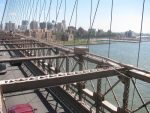
The FDNY serves the five boroughs of New York City and includes 255 fire stations. Each fire station’s differences relate to the size of the firefighting apparatus housed within it and the facility’s location, which is largely driven by the need to minimize response time. The FDNY Engine Companies are tasked with securing a water supply and extinguishing the fire while the FDNY Ladder Companies conduct search and rescue, forcible entry, and ventilation at the scene of a fire.
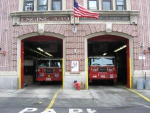
One of Brooklyn’s busiest firehouses is FDNY’s Engine Company 229 and Ladder Company 146. The building housing this group of firefighters is more than 100 years old and they have had trouble for many years with the foundation settling and cracking in their apparatus bays. None of the repairs they had tried worked, which is why URETEK Holdings was called in to help stabilize the subsurface soils underneath the foundation of the apparatus bays.
Working with Cameron Engineering, ZHL Group Contracting, and FDNY’s project manager, URETEK’s project manager (Tony Alfano), prepared a proposal for stabilizing the subsoil by injecting URETEK 486 STAR polymer grout throughout the specified area at a 4’ on center and at -4’ depth.

Since the firehouse had to be operational 24/7 with no downtime, URETEK had to perform the injections with no interruption to the firehouse’s operations. Tony promised the FDNY that the firehouse would remain operational during the repair.

The firehouse moved one truck out of its bay while URETEK’s crews worked in that bay. When the crew was ready to install under the second bay, they simply switched sides, moving the other truck out of the bay while they worked. URETEK completed the installation of the 486 STAR polymer in two days and Tony was able to keep his promise to the fire fighters.
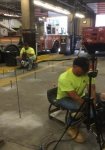
http://groundworkssolutions.com/2015/06/15/soil-stabilization-100-year-old-fdny-firehouse/
2015 FIREHOUSE STABILIZATION

6 15 15 Soil Stabilization under 100-Year-Old FDNY Firehouse
By Robert Armstead
Fire stations are critical in serving the diverse needs of the community where they are located, as well as the fire department they report to. The New York City Fire Department (FDNY) protects more than 8,000,000 New York City residents living and working in a 320 square mile radius. The FDNY is the largest fire department in the United States.

The FDNY serves the five boroughs of New York City and includes 255 fire stations. Each fire station’s differences relate to the size of the firefighting apparatus housed within it and the facility’s location, which is largely driven by the need to minimize response time. The FDNY Engine Companies are tasked with securing a water supply and extinguishing the fire while the FDNY Ladder Companies conduct search and rescue, forcible entry, and ventilation at the scene of a fire.

One of Brooklyn’s busiest firehouses is FDNY’s Engine Company 229 and Ladder Company 146. The building housing this group of firefighters is more than 100 years old and they have had trouble for many years with the foundation settling and cracking in their apparatus bays. None of the repairs they had tried worked, which is why URETEK Holdings was called in to help stabilize the subsurface soils underneath the foundation of the apparatus bays.
Working with Cameron Engineering, ZHL Group Contracting, and FDNY’s project manager, URETEK’s project manager (Tony Alfano), prepared a proposal for stabilizing the subsoil by injecting URETEK 486 STAR polymer grout throughout the specified area at a 4’ on center and at -4’ depth.

Since the firehouse had to be operational 24/7 with no downtime, URETEK had to perform the injections with no interruption to the firehouse’s operations. Tony promised the FDNY that the firehouse would remain operational during the repair.

The firehouse moved one truck out of its bay while URETEK’s crews worked in that bay. When the crew was ready to install under the second bay, they simply switched sides, moving the other truck out of the bay while they worked. URETEK completed the installation of the 486 STAR polymer in two days and Tony was able to keep his promise to the fire fighters.

http://groundworkssolutions.com/2015/06/15/soil-stabilization-100-year-old-fdny-firehouse/
ENGINE 229/LADDER 146 (CONTINUED)
HISTORY
BFD - "ENGINE COMPANY NO. 29 : 'ON THE LINE' OF THE MANHATTAN BEACH RAILROAD"
The Manhattan Beach Branch, Manhattan Beach Line, or Manhattan Beach Division was a line of the Long Island Rail Road, running from Fresh Pond, Queens, south to Manhattan Beach, Brooklyn, New York City, United States. It opened in 1877 and 1878 as the main line of the New York and Manhattan Beach Railway. The tracks from Flatbush south to Manhattan Beach were removed from 1938 to 1941,[1] while most of the rest is now the freight-only Bay Ridge Branch.


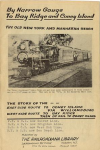



http://arrts-arrchives.com/mbbr2.html
http://www.lirrhistory.com/nymbry.html
HISTORY
BFD - "ENGINE COMPANY NO. 29 : 'ON THE LINE' OF THE MANHATTAN BEACH RAILROAD"
The Manhattan Beach Branch, Manhattan Beach Line, or Manhattan Beach Division was a line of the Long Island Rail Road, running from Fresh Pond, Queens, south to Manhattan Beach, Brooklyn, New York City, United States. It opened in 1877 and 1878 as the main line of the New York and Manhattan Beach Railway. The tracks from Flatbush south to Manhattan Beach were removed from 1938 to 1941,[1] while most of the rest is now the freight-only Bay Ridge Branch.
- from Wikipedia






http://arrts-arrchives.com/mbbr2.html
http://www.lirrhistory.com/nymbry.html
ENGINE 229/LADDER 146 (CONTINUED)
DISBANDED BROOKLYN COMPANIES VIC. ENGINE 229/LADDER 146

ENGINE 212 136 WYTHE AVENUE DISBANDED 1975
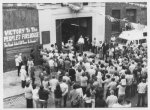
Monday, January 20, 2014
Engine Company 212 - The People's Firehouse

Brooklyn Relics
Monday, January 20, 2014
Engine Company 212 - The People's Firehouse
F.D.N.Y. Engine Company 212 began as Engine Company 12 of the Brooklyn Fire Department at 13 6 Wythe Avenue in 1869. The company was reorganized once the Brooklyn Fire department was assimilated with the Fire Department of New York and became Engine Company Number 212 on January 1st 1913. The name “People’s Firehouse” was coined by an NYPD battalion chief who said "We're not going to remove them. It's the people's firehouse." when refusing an order to forcibly remove a group of activists that occupied the firehouse when the city attempted to disband it in 1975.
During the 1970s New York City faced financial difficulty and responded by issuing budget cuts thereby reducing city services. The F.D.N.Y. was one of the city agencies affected by the cuts, and in response ordered many firehouses to be closed. Between 1972 and 1977 51 firehouses were closed and in November of 1975 the People’s Firehouse was among 8 of those stations scheduled to be closed. At the same time that fire stations were being closed cases of arson were on the rise as property owners torched their buildings to collect on insurance and escape the financial losses associated with the dropping property values of a city in decline. With many wood frame homes in the neighborhood and arson on the rise, residents were rightfully concerned. In addition to arson the city allowed a policy of “planned shrinkage” to dominate Williamsburg and Greenpoint. Budgets for city services including fire, police, education and maintenance were reduced and abandoned buildings were often allowed to crumble or burn down rather than be demolished. Local citizens saw the closing of the firehouse as an unacceptable loss of fire protection and a sign that the neighborhood was being abandoned by city hall, setting the stage for the battle that ensued.
On the day the firehouse was to be closed one of the firemen opposed to the station closing repeatedly sounded the air raid siren in an effort to attract attention to the firehouse and more than 200 neighborhood residents arrived to protest the disbanding of Engine Company No. 212. When the doors to the firehouse were opened at the end of the day's shift and scheduled closing, community activists stormed the building and prevented the firemen and engine from exiting the station. While the firemen were eventually able to leave later in the day, the protestors and fire engine remained in the building. The occupation of the People’s Firehouse lasted sixteen months and included a diverse group of people rotating shifts at the firehouse to prevent the retaking of the station. The group included Boy Scouts, the elderly and entire families. In addition to the takeover of the firehouse activists protested at city offices and in front of Deputy Mayor John Zuccotti’s house, shut down traffic on the B.Q.E., as well as lobbied city hall and the state capital to reinstate the fire company.
Eventually City Hall caved into the demands of the community but at first stopped short of restoring the same level of service to the north Williamsburg firehouse. The first attempt to resolve the issue was to move Rescue Company 4 from Maspeth Queens into the firehouse.[5] Like Williamsburg’s Northside residents, Maspeth community members protested and blocked their firehouse to prevent the engine from leaving.[6] After protests and a court order prevented the moving of Rescue Company No. 4 the city resolved the issue by re-commissioning the firehouse as Utility Unit 1. However, the utility unit’s response to local emergency calls was restricted, leading to a continued dispute between the city and local residents. In 1991 the firehouse was occupied once again until engine company 212 was reinstated, restoring the level of service previously enjoyed by the community in north Williamsburg and Greenpoint. The firehouse eventually closed in 2003 due to cuts made by the Bloomberg administration.
After the original sit-in the people of the People’s Firehouse created a nonprofit advocacy group (The People’s Firehouse Inc.) led by Adam Venezki. The group advocated for the development of affordable housing and energy conservation programs, as well as provided tenant legal services and job training. More recently the firehouse was turned into a cultural space and community center for Greenpoint and Williamsburg called the Northside Townhall Community and Cultural Center.
-
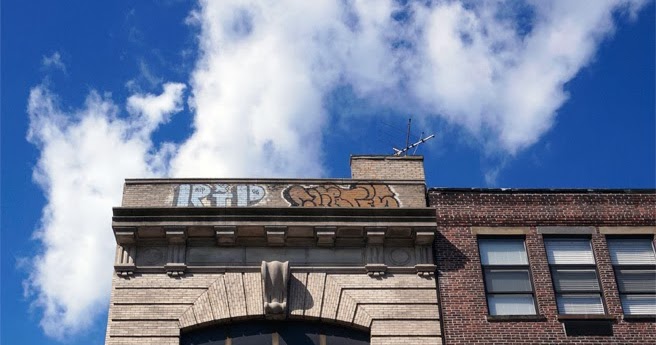
 brooklynrelics.blogspot.com
brooklynrelics.blogspot.com
ENGINE 213 137 POWERS STREET DISBANDED 1959
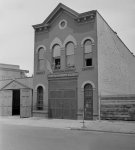
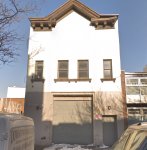
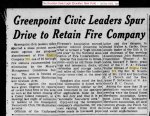
ENGINE 215 88 INDIA STREET DISBANDED 1972
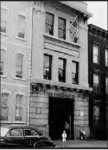
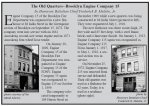
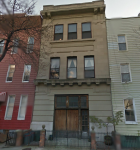
DISBANDED BROOKLYN COMPANIES VIC. ENGINE 229/LADDER 146

ENGINE 212 136 WYTHE AVENUE DISBANDED 1975

Monday, January 20, 2014
Engine Company 212 - The People's Firehouse

Brooklyn Relics
Monday, January 20, 2014
Engine Company 212 - The People's Firehouse
F.D.N.Y. Engine Company 212 began as Engine Company 12 of the Brooklyn Fire Department at 13 6 Wythe Avenue in 1869. The company was reorganized once the Brooklyn Fire department was assimilated with the Fire Department of New York and became Engine Company Number 212 on January 1st 1913. The name “People’s Firehouse” was coined by an NYPD battalion chief who said "We're not going to remove them. It's the people's firehouse." when refusing an order to forcibly remove a group of activists that occupied the firehouse when the city attempted to disband it in 1975.
During the 1970s New York City faced financial difficulty and responded by issuing budget cuts thereby reducing city services. The F.D.N.Y. was one of the city agencies affected by the cuts, and in response ordered many firehouses to be closed. Between 1972 and 1977 51 firehouses were closed and in November of 1975 the People’s Firehouse was among 8 of those stations scheduled to be closed. At the same time that fire stations were being closed cases of arson were on the rise as property owners torched their buildings to collect on insurance and escape the financial losses associated with the dropping property values of a city in decline. With many wood frame homes in the neighborhood and arson on the rise, residents were rightfully concerned. In addition to arson the city allowed a policy of “planned shrinkage” to dominate Williamsburg and Greenpoint. Budgets for city services including fire, police, education and maintenance were reduced and abandoned buildings were often allowed to crumble or burn down rather than be demolished. Local citizens saw the closing of the firehouse as an unacceptable loss of fire protection and a sign that the neighborhood was being abandoned by city hall, setting the stage for the battle that ensued.
On the day the firehouse was to be closed one of the firemen opposed to the station closing repeatedly sounded the air raid siren in an effort to attract attention to the firehouse and more than 200 neighborhood residents arrived to protest the disbanding of Engine Company No. 212. When the doors to the firehouse were opened at the end of the day's shift and scheduled closing, community activists stormed the building and prevented the firemen and engine from exiting the station. While the firemen were eventually able to leave later in the day, the protestors and fire engine remained in the building. The occupation of the People’s Firehouse lasted sixteen months and included a diverse group of people rotating shifts at the firehouse to prevent the retaking of the station. The group included Boy Scouts, the elderly and entire families. In addition to the takeover of the firehouse activists protested at city offices and in front of Deputy Mayor John Zuccotti’s house, shut down traffic on the B.Q.E., as well as lobbied city hall and the state capital to reinstate the fire company.
Eventually City Hall caved into the demands of the community but at first stopped short of restoring the same level of service to the north Williamsburg firehouse. The first attempt to resolve the issue was to move Rescue Company 4 from Maspeth Queens into the firehouse.[5] Like Williamsburg’s Northside residents, Maspeth community members protested and blocked their firehouse to prevent the engine from leaving.[6] After protests and a court order prevented the moving of Rescue Company No. 4 the city resolved the issue by re-commissioning the firehouse as Utility Unit 1. However, the utility unit’s response to local emergency calls was restricted, leading to a continued dispute between the city and local residents. In 1991 the firehouse was occupied once again until engine company 212 was reinstated, restoring the level of service previously enjoyed by the community in north Williamsburg and Greenpoint. The firehouse eventually closed in 2003 due to cuts made by the Bloomberg administration.
After the original sit-in the people of the People’s Firehouse created a nonprofit advocacy group (The People’s Firehouse Inc.) led by Adam Venezki. The group advocated for the development of affordable housing and energy conservation programs, as well as provided tenant legal services and job training. More recently the firehouse was turned into a cultural space and community center for Greenpoint and Williamsburg called the Northside Townhall Community and Cultural Center.
-

Engine Company 212 - The People's Firehouse
The People's Firehouse F.D.N.Y. Engine Company 212 began as Engine Company 12 of the Brooklyn Fire Department at 136 Wythe Avenue in 186...
ENGINE 213 137 POWERS STREET DISBANDED 1959



ENGINE 215 88 INDIA STREET DISBANDED 1972



ENGINE 229/LADDER 146 (CONTINUED)
WILLIAMSBURG
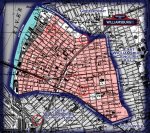
History of Williamsburg, Brooklyn
Here’s a quick history of Williamsburg, Brooklyn. My how you’ve changed!
In 1638, the Dutch West India Company first stole the area’s land from the local Native Americans. In 1661, the company chartered the Town of Boswijck, including land that would later become Williamsburg. After the English takeover of New Netherland in 1664, the town’s name was anglicized to Bushwick.
During its earliest days, Williamsburg was known as Bushwick or Bushwick Shore. Local farmers would gather near what is present day Grand Street to market their produce, leading to a number of other farm developments in the area. Eventually a developer named Jonathan Williams acquired land along what is now Metropolitan Avenue, and in 1802 renamed that area Williamsburgh in honor of himself.
Incorporation soon followed, as did the development of a post office, fire station and numerous shipyards. Williamsburgh’s location on the East River made it a major shipping hub, and resulted in numerous factories expanding there. Due to its expansive growth, it officially separated from the town of Bushwick in 1840, and dropped the “h” from the end of its name to become simply Williamsburg.
In 1855, Williamsburg was officially annexed into the City of Brooklyn, becoming a part of that city’s Eastern District. It would later become a part of New York City in 1898, when Brooklyn became one of the Big Apple’s five boroughs.
-
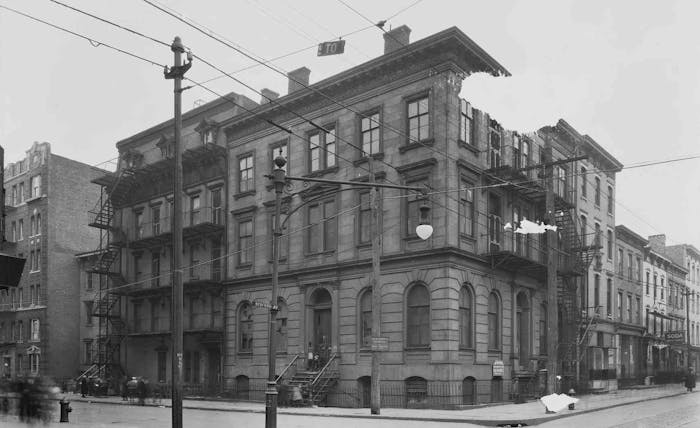
 www.likealocaltours.com
www.likealocaltours.com
WILLIAMSBURG

History of Williamsburg, Brooklyn
Here’s a quick history of Williamsburg, Brooklyn. My how you’ve changed!
In 1638, the Dutch West India Company first stole the area’s land from the local Native Americans. In 1661, the company chartered the Town of Boswijck, including land that would later become Williamsburg. After the English takeover of New Netherland in 1664, the town’s name was anglicized to Bushwick.
During its earliest days, Williamsburg was known as Bushwick or Bushwick Shore. Local farmers would gather near what is present day Grand Street to market their produce, leading to a number of other farm developments in the area. Eventually a developer named Jonathan Williams acquired land along what is now Metropolitan Avenue, and in 1802 renamed that area Williamsburgh in honor of himself.
Incorporation soon followed, as did the development of a post office, fire station and numerous shipyards. Williamsburgh’s location on the East River made it a major shipping hub, and resulted in numerous factories expanding there. Due to its expansive growth, it officially separated from the town of Bushwick in 1840, and dropped the “h” from the end of its name to become simply Williamsburg.
In 1855, Williamsburg was officially annexed into the City of Brooklyn, becoming a part of that city’s Eastern District. It would later become a part of New York City in 1898, when Brooklyn became one of the Big Apple’s five boroughs.
-

History of Williamsburg Brooklyn | Like A Local Tours
Learn about the rich history of Williamsburg, Brooklyn. Many of our tours are centered in this growing and culturally intriguing area of Brooklyn.


